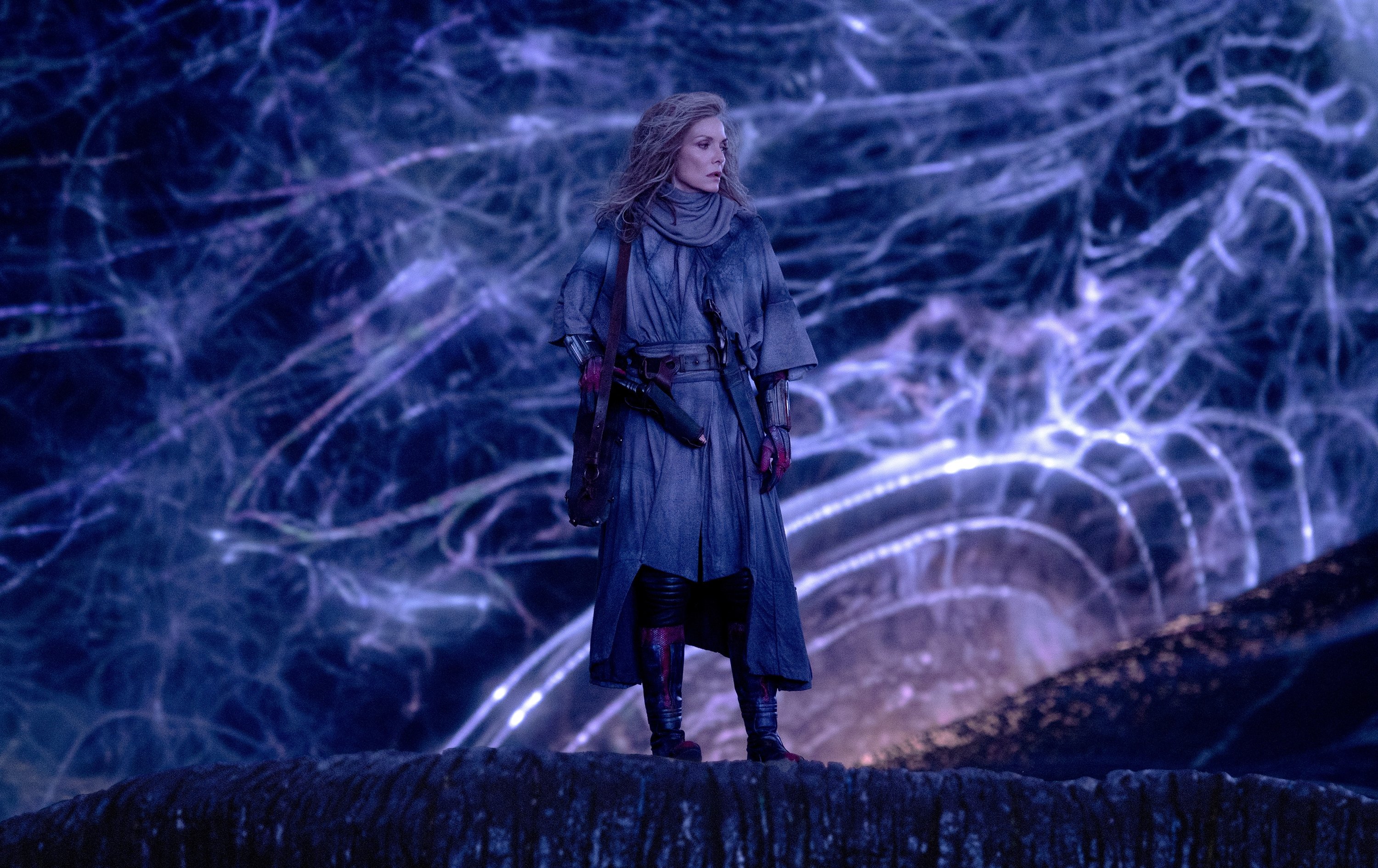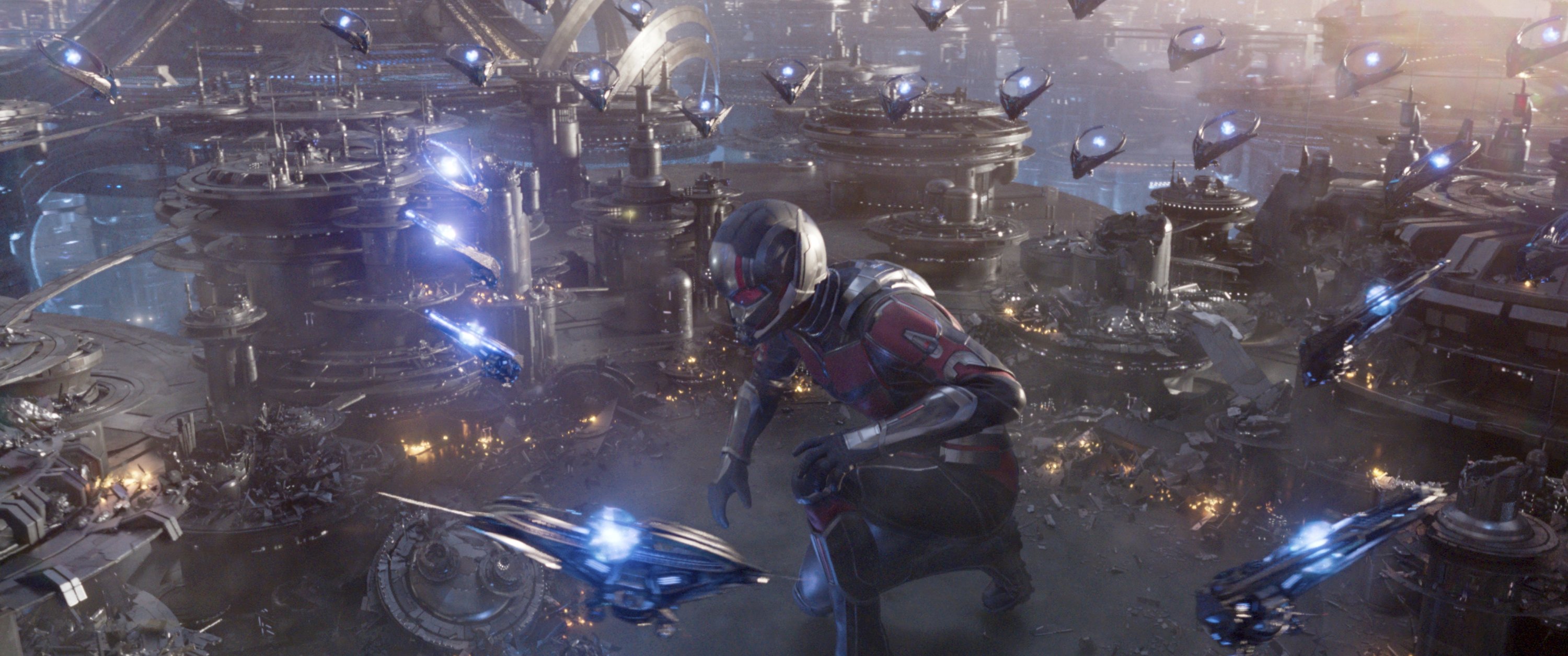© Turkuvaz Haberleşme ve Yayıncılık 2026
Marvel Cinematic Universe (MCU)'s latest movie "Ant-Man and the Wasp: Quantumania" made a start at the box office with $104 million in domestic ticket sales.
It's easily the largest opening of the year so far. And "Quantumania” did so despite an atypically poor reception for the 31st MCU film. "Quantumania," starring Paul Rudd as Ant-Man, Evangeline Lilly as the Wasp and Jonathan Majors as Kang the Conqueror, sits at 48% fresh on Rotten Tomatoes, making it the only MCU film to rank as rotten beside "The Eternals” (47%).
The current Ant-Man, Scott Lang (Paul Rudd), is basking in the aftermath of saving the world with the Avengers, while his partner, Hope van Dyne, aka the Wasp (Evangeline Lilly), and daughter Cassie (Kathryn Newton) are busy trying to make the world a better place. But they, along with Hope's parents Hank Pym (Michael Douglas) and Janet van Dyne (Michelle Pfeiffer), eventually find themselves back in the quantum realm and pitted against Kang.
Fans will recall that this is not Majors' first appearance in the MCU. He made his debut as a character called "He Who Remains" during the first season of "Loki." The name Kang is never mentioned in the series, but there were plenty of clues that pointed to Majors' character being a version of Kang.
A self-proclaimed master of time, Kang has a long history in comics dating all the way back to his debut in the 1960s. Here's everything you need to know about Kang (and He Who Remains) before watching "Quantumania."
The time-traveling supervillain known as Kang the Conqueror was introduced in the pages of Stan Lee and Jack Kirby's "Avengers" No. 8 in 1964. The issue sees him arrive out of thin air in a mysterious UFO in order to subjugate Earth. The Avengers — including then-members Hank Pym and Janet van Dyne — are called on to try to stop him.
In the comics, Kang's original identity is Nathaniel Richards, a 31st-century scholar of sorts who stumbles upon plans for a time machine created by one of his ancestors. Some details of his backstory have changed over the years as different incarnations of Kang wreaked havoc in various storylines, but he generally uses his technology to travel all around the multiverse in order to manipulate events in his efforts to conquer all the time.
Some of his notable stops in time include ancient Egypt and the 41st century. Comic book Kang is also known for his (obsessive) love for Ravonna Renslayer — a name that should be familiar to those who watched "Loki."
Kang is most frequently pitted against the Avengers, but he's also tussled with other teams such as the Fantastic Four. While the Fantastic Four have yet to formally be introduced into the MCU, a Reed Richards variant had a cameo in last year's "Doctor Strange in the Multiverse of Madness." On the rare occasion, he is not busy being a warlord trying to conquer all reality, Kang — or alternate variants of him — has fought alongside these superhero teams.
The Season 1 finale of "Loki" introduced a character known only as He Who Remains. The series followed a God of Mischief (Tom Hiddleston) plucked from time by an organization monitoring the timeline in order to prevent the creation of the multiverse. The various versions of individuals from different timelines or realities are known as variants.
It turns out this organization — known as the Time Variance Authority — was established by He Who Remains, ominously described as the one who "created all and ... controls all," and he has been pulling all the strings behind the scenes. But before he became He Who Remains, as explained in the episode, he was a scientist who lived on Earth in the 31st century. After this 31st-century scientist discovered the existence of the multiverse, he figured out a way to contact other versions of himself from these various timelines who also made the same scientific discovery.

According to He Who Remains, not all of his variants were "pure of heart." Some saw these new realities just as new worlds to be conquered, which led to a multiversal war. In order to prevent this catastrophe, He Who Remains figured out a way to prune the multiverse into one timeline meant to be preserved at all costs.
He Who Remains offered the two Loki variants that arrive at his home base at the Citadel at the End of Time the chance to carry on his life's work of maintaining the one existing timeline. But he was killed by one of them (Sophia Di Martino), which unleashed the multiverse and the infinite possibilities that could lead to a multiversal war within the MCU.
Yes! Before his first appearance as Kang, the time-traveling villain was first introduced in Lee and Kirby's "Fantastic Four" No. 19 (1963) as the pharaoh Rama-Tut. When the Fantastic Four travels to ancient Egypt in search of a cure for blindness, they discover the ruler is a time-traveling thug from the 31st century. It's later revealed that when Rama-Tut made his escape, he traveled to other points in time before his eventual encounter as Kang with the Avengers.
Other Kang variants in the comics include Immortus, a future Kang who has decided to work to preserve timelines and realities in exchange for immortality — much like the MCU's He Who Remains — as well as Iron Lad, an adolescent Nathaniel Richards who travels to the 21st century to stop Kang from happening. (Iron Lad, coincidentally, becomes particularly close to Cassie Lang.)

The Scarlet Centurion is another alias used by Kang after he'd spent some time with Marvel comics villain Doctor Doom (one of his potential ancestors that has yet to appear in the MCU). At other times, Kang variants have been known as Victor Timely, an inventor and mayor of a small Wisconsin town, as well as Mister Gryphon, a businessperson. There have also been comic storylines that feature so many different Kangs that they formed a council that killed versions they deemed unworthy.
Marvel fans will just have to wait to see which Kang variants come into play in "Quantumania" and beyond.
